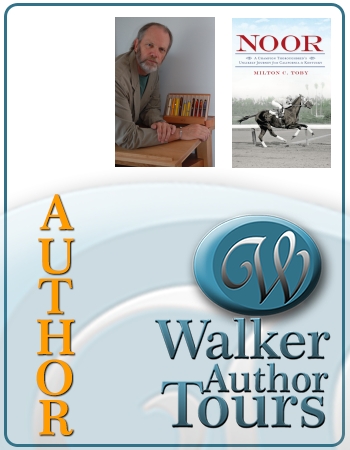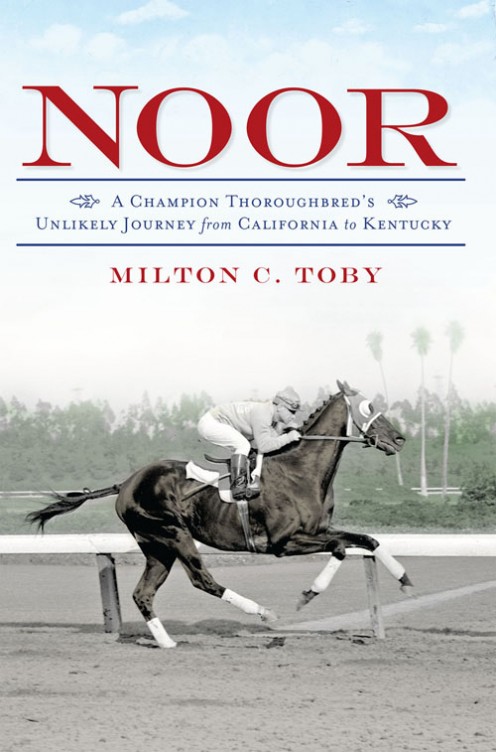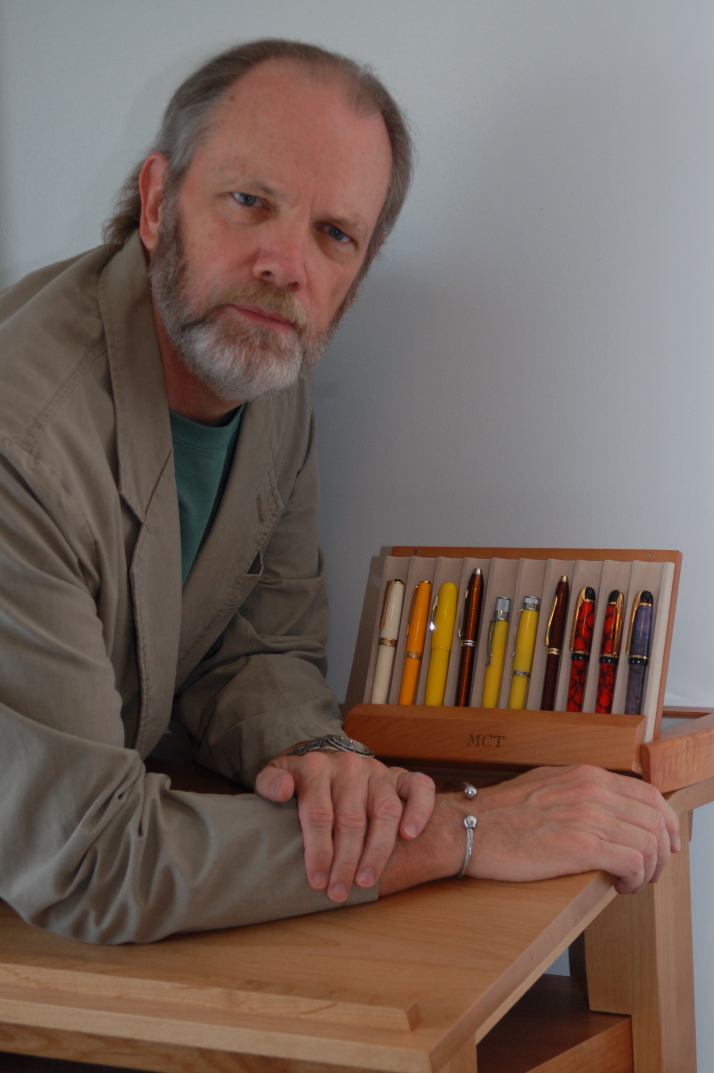
Tell us about your book.
Noor is the best Thoroughbred no one remembers. He was owned by Charles S. Howard, who is most famous as Seabiscuit’s owner, but in 1950 Noor was as good as any horse, anywhere. He defeated Citation four times in California that year, set three world records in the process, and would have been Horse of the Year if the voting had taken place after the Hollywood Gold Cup rather than before the race. Noor died after a mediocre career at stud, and he was buried in an unmarked grave on a Northern California farm. No one gave the horse another thought until a few years ago, when commercial development threatened the farm. An avid race fan named Charlotte Farmer wanted Noor’s memory preserved and she spearheaded a campaign to locate the horse’s grave, exhume the remains, and ship them to Kentucky for reburial. Noor now lies at Old Friends, a Thoroughbred retirement farm a few miles from my house. Noor: A Champion Thoroughbred’s Unlikely Journey from California to Kentucky is Noor’s story, and Charlotte’s.
Where can we find out more about you and buy your book?
My website is www.miltonctoby.com, where readers can find biographical information, read excerpts from my most recent books about Noor and Dancer’s Image, and order signed copies.
What is your opinion on people who post bad reviews?
I try not to take a bad review personally, but that’s tough when you’ve worked a year or more on a book. That’s why I don’t read reviews on a regular basis. I don’t put a lot of stock in reviews, either good or bad, because I understand that not everyone is going to like—or agree with—what I write. I think reviews should be a service to the reader, and I don’t like reviewers who write snarky reviews just because they can. Some of the most valuable reviews I’ve gotten have been so-called “bad” ones that point out a factual mistake that can be fixed in a subsequent printing.
Do you have any particular networking groups you would like to share that have helped you move forward with your success?
I’m active in a couple of national organizations, the American Society of Journalists and Authors and American Horse Publications. I’m Chair of the ASJA Contracts & Conflicts Committee, which helps writers decipher their publishing contracts and deal with author-publisher disputes, and on the Board of Directors of AHP. Both groups offer annual conventions with a wide range of educational programs and networking opportunities. I’m a relative newcomer to Equine Authors United on Facebook, but it’s a great group of people and the contacts I’m making there should be valuable.
Are you an independent writer, or are you represented by an agent? How does this work out for you, especially if you have done it both ways?
I don’t have an agent, and so far that has been successful. Working with my first publishers, Blood-Horse Publications and Eclipse Press, was a natural extension of spending a dozen years on the editorial staff of The Blood-Horse magazine. My association with The History Press, which published my two latest books on Dancer’s Image and Noor, came about through a meeting arranged by a colleague. I have some projects in mind that I think will benefit from an agent, though, so I’m in the market for one.
What advice would you give to someone just starting out in the publishing industry?
In no particular order:
1. Understand that writing is part creative effort and part business, and that you can’t ignore either side of the authorship coin.
2. Learn the basic rules of grammar, punctuation, sentence structure, and story design. They’re rules for a reason, and nothing turns off an agent, or an editor, or a reader than careless mistakes.
3. Break the rules when you need to do so, but never just because you can.
4. Learn to be ruthless when you edit your work.
5. Spend some time learning how the publishing industry works.
6. Read—a lot—in the genre you want to write, and in others genres as well. Good writing begets good writing.
7. Understand that you’re competing against a lot of talented writers with compelling stories, and accept the fact that success involves a large element of luck.
8. Keep writing.
Tell us a little about yourself as a person. Hobbies? Pets? Family?
I started writing professionally in 1972 as sports editor for a newspaper in Aiken, a South Carolina town with a long history as a winter training venter for Thoroughbreds. I’ve been writing about horses ever since, with side trips (some ongoing) as a freelance news photographer in the US and abroad, lawyer, mediator, conference presenter on publishing contracts and copyright, golf rules official, weight lifter—the list goes on.
I’m married to Dr. Roberta Dwyer, a veterinarian working in the Department of Veterinary Science at the University of Kentucky, and we share our house with a quartet of pets: a Dalmatian named Burdock, a Doberman named Echo, and a pair of rescue cats named Plumkpin and Sherlock.
Have you made any mistakes in your career that you hope others can avoid?
After 40 years, that’s a long list. If I were going to pick one, it would be taking myself too seriously.
What are your habits when you sit down to create? Do you have to be in a certain room? outside? Music playing?
I do almost all of my writing at home, where I have a small office with books lining the walls, a computer, and an obscenely expensive chair. If you’re going to spend any significant amount of time in front of a computer, you need a decent place to sit. I spent a lot of money on this chair, and I thank myself every time I write. I’ve tried writing in other places, but there are two problems with that—I don’t like lugging a laptop around and I generally can’t read my handwriting, and I don’t like distractions, unless they are of my own making. I listen to NPR when I’m working—news, music, commentary, whatever happens to be on at the time.
Where do you find inspiration for your books?
Deadlines!
Aside from that external pressure, I think inspiration is vastly overrated as a reason to write—or a lack thereof as a reason not to write. I like what William Faulkner supposedly said: “I only write when I am inspired. Fortunately, I am inspired at nine o’clock every morning.”













































